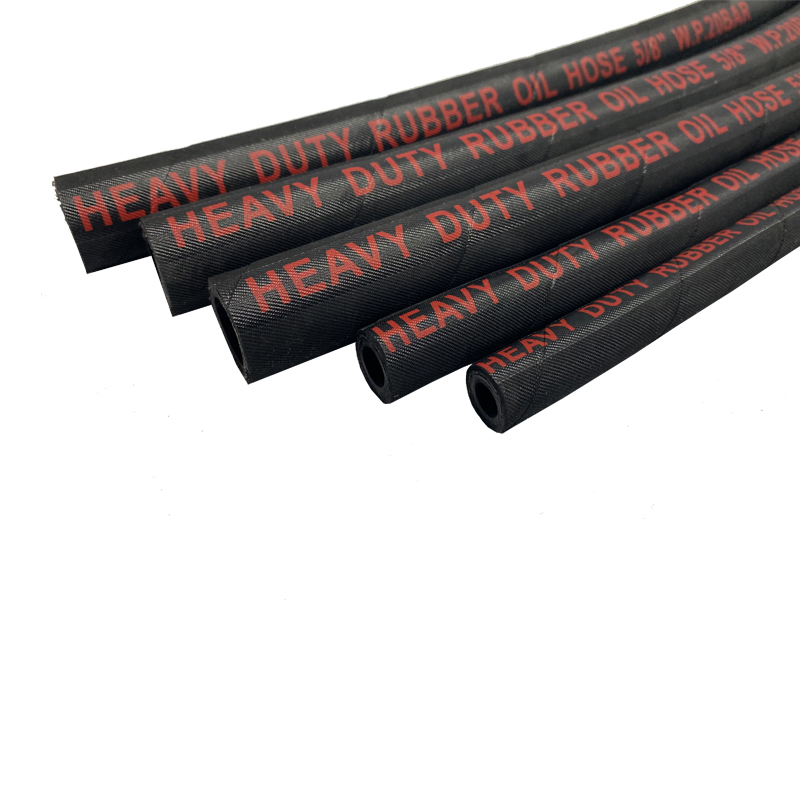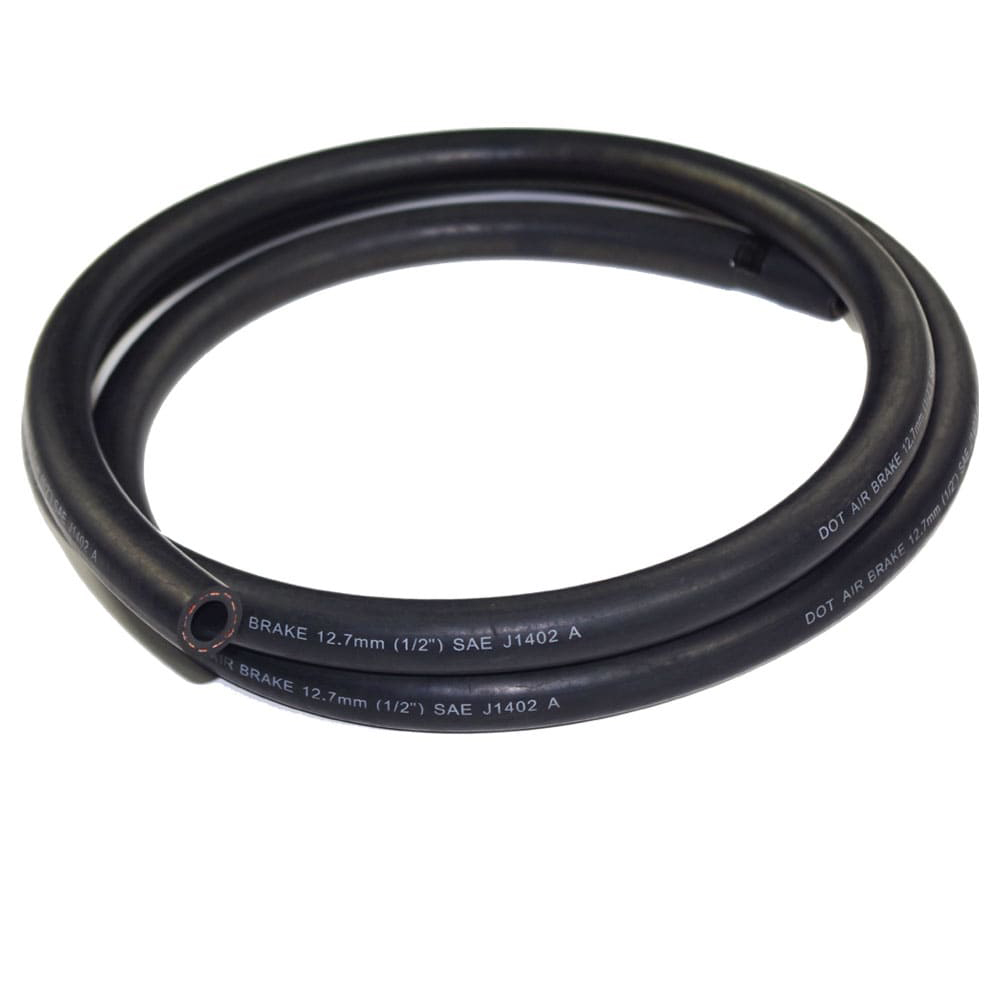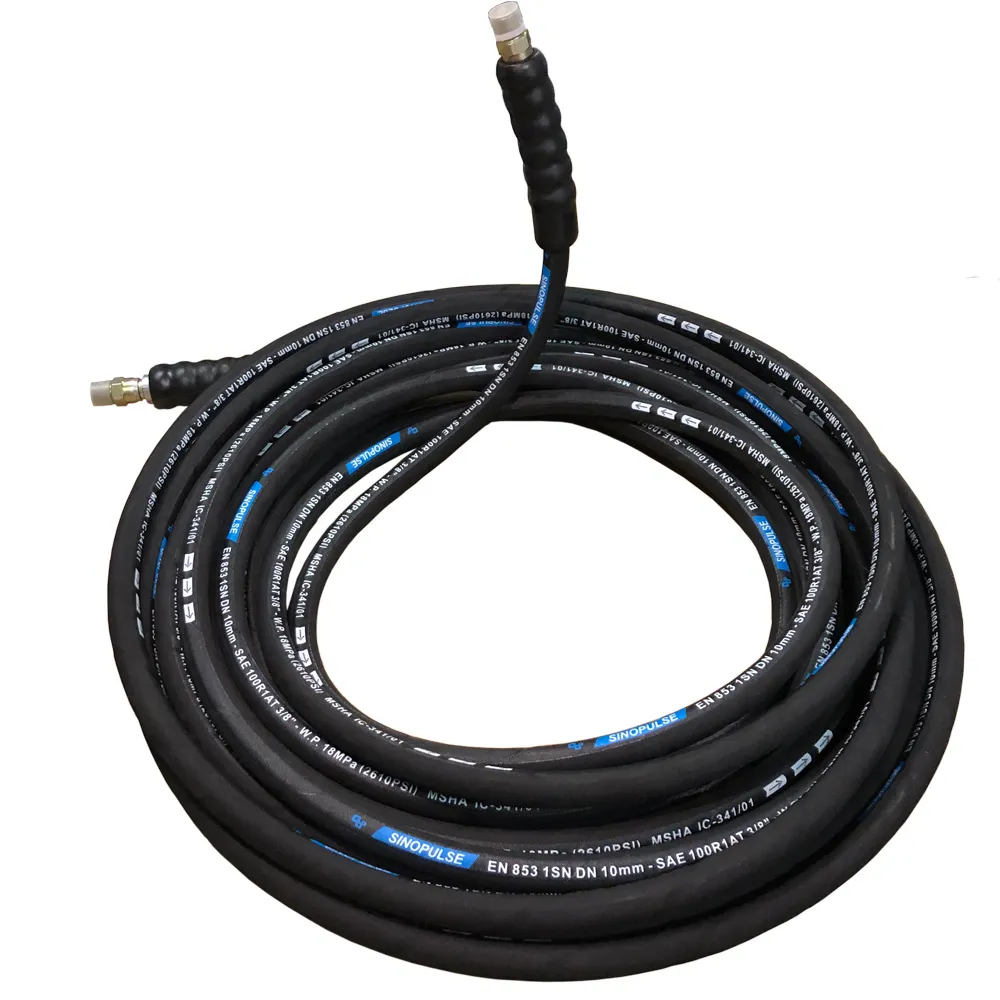Tubu d'oliu
Un tubu d'oliu hè un tubu flexible specializatu cuncepitu per trasferisce diversi tipi d'olii, cumpresi lubricanti, fluidi idraulichi è olii di carburante, in sistemi industriali, automobilistici è agriculi.
Custruiti cù tubi interni resistenti à l'oliu, rinforzi robusti è coperchi esterni durable, i tubi d'oliu sò ingegneriati per trattà à alte pressioni è cundizioni duri mantenendu flessibilità è longevità. Sti tubi sò largamente usati in applicazioni cum'è sistemi idraulichi, lubricazione di u mutore, consegna di carburante è trasferimentu d'oliu in machini è equipaghji. Per esempiu, in i sistemi idraulichi, i manichi d'oliu assicuranu un flussu stabile di fluidu idraulicu trà i cumpunenti, facilitendu u funziunamentu lisu. In i motori di l'automobile, portanu oliu di motore per lubricazione è rinfrescante. L'applicazioni industriali implicanu u trasferimentu di grandi volumi di oliu da i tanki di almacenamiento à l'equipaggiu o pipeline. I tubi d'oliu sò ancu essenziali in l'agricultura per l'alimentazione di trattori è altre machini dipendenti di l'oliu. A so custruzzione affidabile è a cumpatibilità cù diversi tipi di oliu li rende indispensabili per mantene operazioni efficienti è sicure in parechje industrie.
Chì sò i materiali principali utilizati in i tubi d'oliu, è cumu impactanu u rendiment?
I tubi d'oliu, cruciali per diverse operazioni in relazione à l'oliu, sò tipicamente fatti cù materiali cum'è gomma nitrile (NBR), gomma sintetica, termoplastiche è PVC, ognuna scelta per e so proprietà specifiche per trattà u trasferimentu d'oliu in modu efficace in diversi tipi di tubi d'oliu. Per esempiu, i tubi di u cooler d'oliu spessu necessitanu materiali chì ponu trattà a dissipazione di u calore durante u trasferimentu di l'oliu. A gomma nitrile, cunnisciuta per fà eccellenti tubi resistenti à l'oliu, hè largamente utilizata per a so eccellente resistenza à l'oliu, u carburante è u grassu, chì a rende ideale per l'applicazioni automobilistiche è industriali.
A gomma sintetica offre una flessibilità è una durabilità rinfurzata, soprattuttu in ambienti d'alta pressione, resistendu ancu à l'invecchiamentu è a cracking. Questu fa una grande scelta per i manichi di pressione d'oliu chì anu bisognu di mantene a so integrità sottu pressione. I materiali termoplastici furniscenu una custruzzione ligera è resistenza à l'abrasione è à i fatturi ambientali, facendu adattati per applicazioni portatili o esterni.
U PVC hè comunmente utilizatu per i tubi d'oliu d'usu generale per via di a so accessibilità è versatilità, ma ùn pò micca fà bè sottu à temperature o pressioni estreme. In i casi induve una manguera d'oliu deve esse usata in un ambiente menu esigenti, u PVC pò esse una opzione di costu. Rinforzi cum'è trecce tessili, filu d'acciaio, o strati spirali aumentanu a forza di l'oliu è a tolleranza di pressione, chì hè essenziale per i tubi di pressione d'oliu in particulare. L'scelta di materiale impacta a flessibilità di a manguera, a gamma di temperatura è a cumpatibilità cù diversi tipi d'oliu, assicurendu un rendiment ottimali è longevità in applicazioni specifiche per tutti. tubi industriali.
Cumu Mantene una Manguera d'Oliu per Assicurà Affidabilità è Sicurezza à longu andà?
A mantenimentu di una manguera d'oliu implica inspezioni regulare, manipolazione curretta, è aderenza à e linee operative per prevene fallimenti è allargà a so vita di serviziu. Inspeccione a manguera periodicamente per i segni di usura, cum'è crepe, fughe, vesciche o abrasioni, in particulare intornu à raccordi è curve, postu chì questi spazii sò propensi à stress. Sustituisci immediatamente i tubi danneggiati per evità fallimenti di u sistema o periculi di sicurezza. Pulite a manguera regularmente per sguassà i residui d'oliu, a terra è i contaminanti chì ponu degradate u materiale cù u tempu. U almacenamentu propiu hè essenziale; mantene a manguera in una zona fresca, secca è ben ventilata, luntanu da a luce diretta di u sole, l'umidità è i sustanzi chimichi duri chì ponu debilitatu u materiale. Evitate di superà i limiti di pressione, temperatura è raghju di curvatura specificati di u tubu durante l'usu per prevene a sovraccarica è l'usura prematura. Assicuratevi chì i raccordi sò attaccati in modu sicuru è verificate periodicamente per perdite o cunnessione allentate. Seguendu queste pratiche di mantenimentu, pudete assicurà un rendimentu affidabile, rinfurzà a sicurità è allargà a vita di a vostra manguera d'oliu.
Analysis of Core Materials and Oil-Resistant Mechanisms in Oil Hoses
SINOPULSE designs high-performance oil hoses with a deep understanding of material science and fluid dynamics. The selection and engineering of core materials play a pivotal role in ensuring hoses can withstand continuous exposure to various oils without degradation. Here’s an in-depth look at the key components and their oil-resistant mechanisms that make SINOPULSE hoses the preferred choice for oil suction, transfer, and delivery applications.
Nitrile Butadiene Rubber (NBR): The Backbone of Oil Resistance
At the heart of SINOPULSE oil-resistant hoses lies Nitrile Butadiene Rubber (NBR), a synthetic elastomer renowned for its exceptional oil compatibility. NBR’s molecular structure, characterized by acrylonitrile monomers, creates a cross-linked network that repels hydrocarbon-based oils. This unique composition minimizes oil absorption, ensuring the hose maintains its physical properties—such as flexibility, strength, and sealing integrity—even after prolonged immersion. For example, in diesel fuel or hydraulic oil applications, NBR-lined hoses exhibit a swelling rate of ≤5%, far surpassing the performance of standard rubber materials.
Reinforcement Layers: Enhancing Structural Integrity
To complement the oil-resistant inner tube, SINOPULSE integrates robust reinforcement layers. High-tensile steel wire braids or synthetic fiber meshes are woven around the NBR core, providing mechanical strength and pressure resistance. These layers distribute internal pressure evenly, enabling oil transfer hoses to handle working pressures up to 40 bar (580 PSI) and burst pressures exceeding 120 bar (1740 PSI). In heavy-duty scenarios like oil tank truck loading or industrial hydraulic systems, the reinforcement prevents tube collapse and leakage, ensuring safe and efficient oil delivery.
Outer Cover: Protection Against External Threats
The outer cover of SINOPULSE oil hoses is engineered to withstand harsh environments while safeguarding the inner components. Made from abrasion-resistant synthetic rubber or thermoplastic compounds, it resists cuts, punctures, and UV degradation—common hazards in outdoor oil transfer operations. Additionally, anti-static outer layers are available for applications involving flammable oils, dissipating electrical charges to prevent ignition risks.
Advanced Formulations for Specialized Oils
For applications requiring compatibility with synthetic lubricants, biofuels, or high-viscosity oils, SINOPULSE offers oil hoses with advanced material formulations. Fluoroelastomer (FKM) liners, for instance, provide superior resistance to aggressive chemicals and high temperatures, making them ideal for aerospace or automotive manufacturing. These specialized hoses undergo rigorous testing to ensure compliance with industry standards, such as ISO 18752 for fuel hose performance.
In industries where reliable oil transfer is non-negotiable, SINOPULSE’s commitment to material innovation and engineering excellence ensures that our oil hoses deliver long-lasting performance, safety, and efficiency.
Fault Warning and Emergency Handling of Oil Hoses
As a trusted oil hose manufacturer, SINOPULSE prioritizes safety and reliability in every oil hose we produce. However, even the most durable oil resistant hoses may encounter issues over time. Understanding how to detect early signs of failure and execute proper emergency protocols is crucial for preventing costly downtime and potential hazards in oil suction, transfer, and delivery operations.
Early Warning Signs of Hose Failure
SINOPULSE recommends regular visual inspections to identify impending issues. Bulges or Swelling indicate internal pressure damage or material degradation, often caused by excessive stress or incompatible oil types. Cracks or cuts in the outer cover expose the inner layers to environmental threats, increasing the risk of leakage. Discoloration or Hardening of the hose material signals chemical breakdown, particularly if the hose has been exposed to incompatible fluids. Additionally, unusual vibrations or whistling noises during operation may suggest blockages or pressure imbalances within the oil hose.
Emergency Response Protocols
In the event of a suspected hose failure, immediate action is essential. First, isolate the system: shut off the oil supply valves and depressurize the line to prevent further leakage. If the hose is used for flammable oils, evacuate the area and prohibit any ignition sources. For minor leaks, applying a specialized hose repair tape designed for oil-resistant materials can provide temporary containment, but this is only a stopgap measure. For significant damage, replace the hose with a SINOPULSE oil transfer hose of the same specification, ensuring proper fitting and alignment to avoid future issues.
Preventive Maintenance for Longevity
To minimize the risk of emergencies, follow SINOPULSE’s maintenance guidelines. Avoid exceeding the hose’s rated working pressure and temperature range, as overloading accelerates wear. When installing oil suction hoses, ensure the bend radius meets specifications to prevent kinking. Regularly clean and lubricate connectors to maintain a tight seal, and store hoses in a cool, dry environment away from direct sunlight to slow down material aging.
With SINOPULSE’s comprehensive approach to oil hose safety, operators can confidently manage potential risks and ensure continuous, secure oil transfer in any industrial setting.












